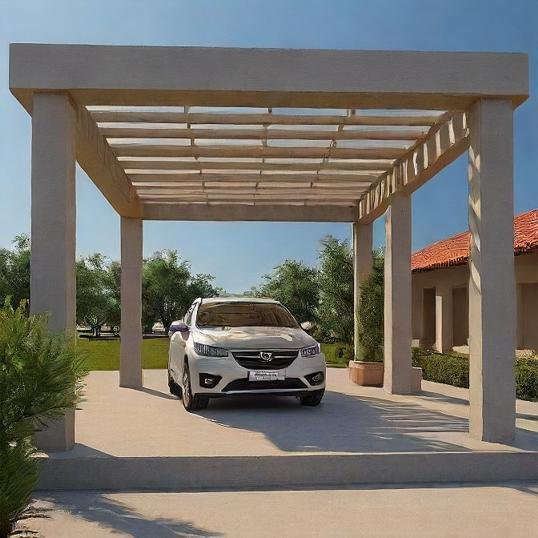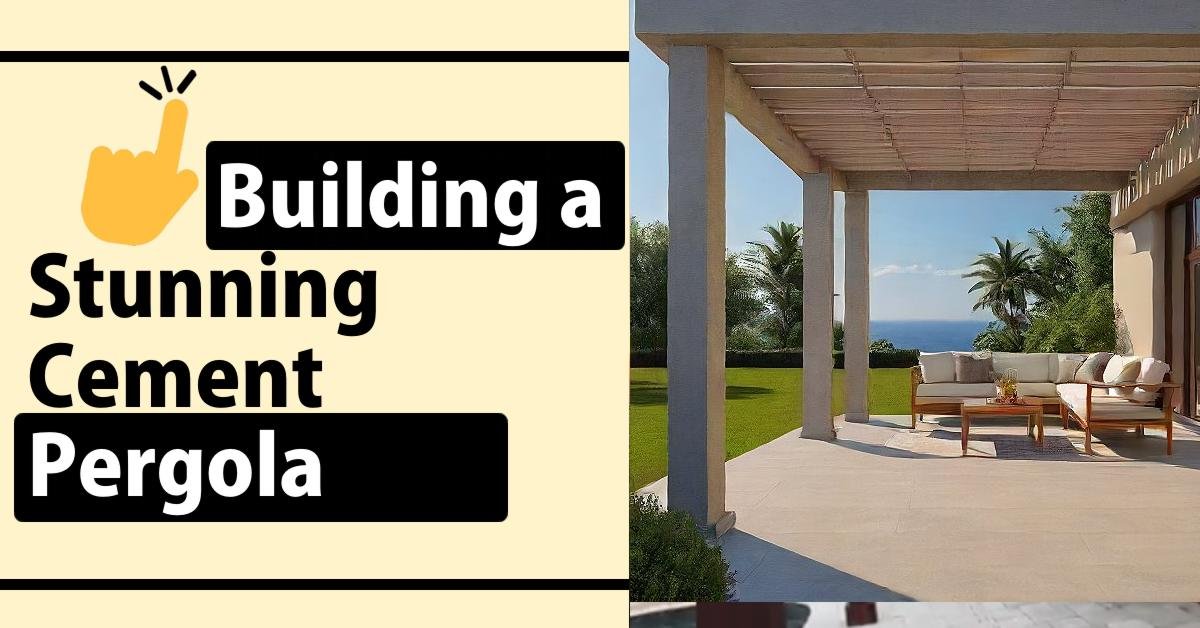Outdoor living spaces have become increasingly popular, and a well-designed pergola can make your backyard or patio into a true oasis. Among the various materials available, cement or concrete pergolas offer durability, strength, and a timeless aesthetic.
Understanding Cement Pergolas
What is a Cement Pergola?
A cement pergola is an outdoor structure composed primarily of concrete or cement-based materials, such as columns, beams, and lattice work. These sturdy structures provide shade and visual interest while seamlessly blending with the surrounding landscape.

Benefits of Cement Pergolas
- Durability: Cement pergolas are known for their exceptional longevity and resistance to weathering, ensuring they’ll stand the test of time.
- Low Maintenance: Unlike wood, cement pergolas require minimal upkeep, making them a hassle-free addition to your outdoor space.
- Versatility: Cement pergolas can be designed to complement various architectural styles, from traditional to contemporary.
- Customization: The versatility of cement allows for endless design possibilities, enabling you to create a truly unique structure.
Planning and Design

Site Evaluation
Before beginning your cement pergola project, it’s crucial to evaluate your site conditions. Consider factors such as the available space, sun exposure, and existing landscaping elements. This will help you determine the optimal size, orientation, and placement of your pergola.
Design Considerations
- Style and Aesthetic: Decide on the desired style for your pergola, whether it’s classic, modern, or rustic, and ensure it complements the overall design of your outdoor space.
- Size and Proportions: Determine the appropriate size and proportions for your pergola based on the available space and intended use (e.g., seating area, walkway, etc.).
- Structural Requirements: Consult with a professional or refer to local building codes to ensure your pergola design meets the necessary structural requirements for safety and stability.
Materials and Tools
Cement and Concrete
The primary materials for your pergola will be cement and concrete. Ensure you choose high-quality, weather-resistant varieties suitable for outdoor use.
Reinforcement
To enhance the strength and durability of your cement pergola, you’ll need reinforcement materials such as rebar, wire mesh, or fiberglass.
Tools and Equipment
Gather the necessary tools and equipment, including:
- Concrete mixer
- Trowels and floats
- Levels and squares
- Concrete forms and molds
- Safety gear (gloves, goggles, etc.)
Construction Process
Site Preparation
Begin by clearing and leveling the area where your pergola will be constructed. Ensure proper drainage and compact the soil to provide a stable foundation.
Footings and Foundation
Lay out and excavate the footings, following your design specifications and local building codes. Properly reinforce the footings with rebar or wire mesh before pouring the concrete.
c,b Column and Beam Installation
Footings:
The footings of a cement pergola serve as the foundation that supports the weight of the entire structure. They are typically constructed using reinforced concrete to ensure strength and stability. The design and size of the footings will depend on factors such as soil conditions, local building codes, and the anticipated load of the pergola.
One common approach for footings is the use of spread footings, which are wide and shallow concrete pads that distribute the weight evenly. These footings are typically square or rectangular in shape and may have tapered or straight sides, depending on the design requirements.
Another option is the use of isolated footings, which are individual reinforced concrete pads that support each column separately. These footings are often cylindrical or square in shape and can be designed to accommodate different column sizes and loads.
Columns:
The columns of a cement pergola are the vertical supports that transfer the load from the beams and roof structure to the footings. They can be constructed using a variety of techniques and materials, including precast concrete columns, cast-in-place concrete columns, or a combination of both.
For cast-in-place columns, concrete forms or molds are used to shape the columns during the pouring process. These forms can be designed to create various column shapes and styles, such as:
Square or rectangular columns: These are simple and straightforward designs that offer a clean, modern look.
Tapered columns: These columns have a wider base that narrows towards the top, creating a more visually appealing and structurally sound design.
Fluted columns: These columns feature vertical grooves or flutes along their surface, adding a decorative and classical touch.
Twisted columns: These columns have a spiral or twisted design, providing a unique and eye-catching appearance.
Concrete forms for columns can be made from various materials, such as wood, plastic, or metal, and can be custom-designed to achieve the desired shape and size.
Beams:
The beams of a cement pergola are the horizontal structural elements that span between the columns and support the roof or lattice structure. Like the columns, beams can be constructed using precast concrete or cast-in-place concrete techniques.
For cast-in-place beams, concrete forms or molds are used to shape the beams during the pouring process. These forms can be designed to create various beam shapes and profiles, such as:
Rectangular beams: These are the most common and straightforward beam designs, providing a clean and simple look.
Arched beams: These beams feature a curved or arched profile, adding a touch of elegance and visual interest to the pergola design.
Decorative beams: Concrete forms can be designed to incorporate decorative elements, such as corbels, brackets, or intricate patterns, to enhance the aesthetic appeal of the beams.
Lattice Work and Finishing Touches
After the main structure is in place, add the decorative latticework or other design elements to complete the aesthetic of your cement pergola. Consider incorporating climbing plants or hanging planters for an added touch of nature.
Maintenance and Care
Cleaning and Sealing
Regular cleaning and sealing will help protect your cement pergola from environmental factors and prolong its lifespan. Use a mild detergent and a stiff brush to remove dirt and grime, and apply a high-quality sealer every few years.
Repair and Upkeep
If any cracks or damage occur over time, address them promptly to prevent further deterioration. Minor repairs can be made with cement patching compounds, while more extensive damage may require professional assistance.
Enhancing Your Outdoor Living Space
Furniture and Decor
Once your cement pergola is complete, it’s time to furnish and decorate the space. Consider adding comfortable seating, outdoor rugs, and decorative lighting to create a cozy and inviting atmosphere.
Landscaping Integration
Integrate your pergola into the surrounding landscape by incorporating complementary plantings, pathways, and water features. This will create a seamless transition between the built and natural elements of your outdoor space.
Building a cement pergola is a rewarding project that can significantly enhance your outdoor living experience. By following this comprehensive guide, you’ll not only create a stunning and durable structure but also contribute to the overall aesthetic and functionality of your outdoor space. Embrace the process, and enjoy the rewards of your hard work for years to come.
